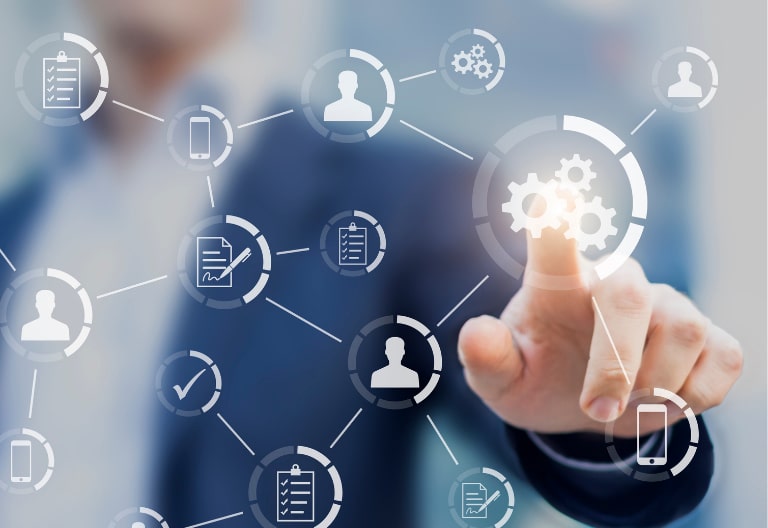Best Data Standardization Tools for Ensuring Data Quality

Organizations face a fundamental challenge when working with data: how to transform raw, inconsistent information from multiple sources into a reliable foundation for decision-making. Data standardization solves this problem by converting disparate data into uniform formats that follow consistent rules and conventions.
Most enterprises utilize dozens of applications, each with different data entry methods and storage formats. This natural fragmentation creates persistent problems – inconsistent date formats, varying address structures, mismatched product codes, and duplicate customer records. Without standardization, these inconsistencies compromise analytics, impair reporting accuracy, and ultimately lead to flawed business decisions.
Data standardization tools have emerged as essential solutions to these challenges, offering automated methods to clean, transform, and validate data at scale. By implementing effective standardization processes, organizations can dramatically improve data quality, enhance operational efficiency, and build a solid foundation for advanced analytics and business intelligence. The right standardization tools not only resolve immediate data inconsistencies but establish sustainable processes for maintaining data integrity across the enterprise.
Coming Up
What are Data Standardization Tools?
Data standardization tools are software solutions designed to transform inconsistent, messy data from various sources into a uniform, structured format that follows consistent rules and conventions. These tools play a crucial role in data quality management by assisting in automating data processes to ensure that data remains fit for purpose across various analytical and machine learning applications.
Without standardization, organizations face constant challenges from inconsistent date formats, varied naming conventions, duplicate entries, and incompatible data structures. These inconsistencies can slow down operations, skew insights, and make compliance more difficult.
Definition and Why It Matters
Data standardization is the process of converting data into a consistent format across all systems, applications, and databases. This process improves data quality, reduces errors, and ensures compatibility between systems. Whether you’re integrating CRM data, performing financial reporting, or preparing datasets for analysis, standardized data is essential for accuracy and trustworthiness.
By using data standardization software, organizations can:
- Automatically apply consistent data quality rules to transform and validate incoming data
- Clean and structure data across multiple systems and formats
- Prepare data for downstream use in analytics, automation, and compliance workflows
Here’s what standardization often looks like in practice:
- Converting all dates to a standard format like YYYY-MM-DD
- Ensuring phone numbers follow a uniform international format
- Replacing inconsistent abbreviations (e.g., “St.” → “Street”)
- Unifying capitalization and punctuation across datasets
Why You Need Data Standardization Tools
Manual standardization is slow, error-prone, and hard to scale. Data quality tools are essential for improving data management and analytics. Tools purpose-built for standardization:
- Automate repetitive data cleansing tasks
- Ensure consistent formatting across datasets
- Support data validation and error detection
- Help maintain data integrity as your data evolves
By investing in the right tool, organizations can not only solve immediate inconsistencies, but also build long-term processes for maintaining data integrity and trust.
Data Standardization vs. Data Normalization
While often used interchangeably, data standardization and data normalization serve different purposes:
- Data Standardization focuses on creating uniformity in data formats and values. It involves cleaning and converting data into standardized formats (like ensuring all dates follow YYYY-MM-DD format or all phone numbers follow a specific pattern).
- Data Normalization is primarily concerned with organizing database structures to reduce redundancy and improve data integrity. It involves restructuring tables and establishing relationships between data elements to eliminate duplication and dependency issues.
In simple terms, standardization addresses how data is formatted, while normalization addresses how data is structured and organized within a database system.
The Data Standardization Process: A Brief Overview
The process of standardizing data typically follows these key steps:
- Data profiling and assessment: Examine existing data to identify inconsistencies, errors, and quality issues across sources.
- Standard definition: Establish clear rules and guidelines for how each data element should be formatted and represented.
- Data cleansing: Remove or correct invalid entries, duplicates, and formatting inconsistencies in accordance with defined standards.
- Transformation: Convert data into the standardized format through parsing, merging, or restructuring operations.
- Validation: Verify that the transformed data meets the established standards and requirements.
- Implementation: Apply standardization rules systematically across all data sources and incorporate them into ongoing data management processes.
- Maintenance: Continuously monitor data quality and update standardization rules as business needs evolve.
By implementing a robust data standardization process, organizations can ensure that their data remains consistent, accurate, and valuable for driving business decisions and operations.
What are Common Data Quality Issues?
Data quality issues can stem from a variety of sources, including human error, system glitches, and inconsistent data formats. These issues can significantly impact the reliability and accuracy of your data. Here are some common problems and challenges associated with data quality:
- Inconsistent Data Formatting: Different data sources often use varying formats for dates, times, and other data elements. This inconsistency can lead to errors and make it difficult to integrate and analyze data effectively.
- Incomplete Data: Missing or incomplete data can compromise the accuracy and reliability of data analysis and decision-making. It can also lead to gaps in reporting and insights.
- Data Duplication: Duplicate data entries can create confusion and lead to errors in data analysis and reporting. This is particularly problematic when merging data from multiple sources.
- Data Inconsistencies: Data inconsistencies can arise from different data sources, leading to errors and inaccuracies in data analysis and decision-making. This can affect the overall quality of insights derived from the data.
- Data Validation: Ensuring that data is accurate and valid is crucial for maintaining data quality. Without proper validation, data can become corrupted or misleading.
Addressing these challenges is essential for maintaining high data quality, which in turn supports accurate data analysis and informed decision-making.
Key Features to Look for in Data Standardization Tools
When selecting a data standardization tool for your organization, certain capabilities stand out as essential. Here are the critical features to consider:
1. Automation & AI Capabilities
Modern data standardization tools leverage artificial intelligence and machine learning to reduce manual intervention and human error. Pattern recognition algorithms identify standardization rules while intelligent data mapping learns from previous corrections. Advanced tools detect anomalies that require special handling and improve accuracy over time as they process more data. These AI-powered features can reduce standardization time from weeks to hours while significantly improving accuracy rates.
2. Data Cleansing & Validation Capabilities
Effective tools offer comprehensive cleansing and validation functions for dates, phone numbers, addresses, and other common data types. Look for de-duplication capabilities to identify redundant records, customizable validation rules, meaningful error reporting, and data enrichment options. The most versatile solutions provide both pre-built cleansing functions and the ability to create custom rules for unique data challenges.
3. Integration with Existing Systems
Your standardization tool should seamlessly connect with your technology ecosystem. Prioritize solutions with API connectivity to CRM systems, data warehouses, and analytics platforms, along with support for various data formats. Key integration features include ETL capabilities, compatibility with cloud and on-premises infrastructure, and BI tool integration. The best tools provide both standard connections and flexible options for custom applications.
4. Scalability for Large Datasets
As data volumes grow, your standardization solution should scale accordingly. Seek out high-performance processing for handling millions of records efficiently and distributed computing support when needed. Valuable features include incremental processing for changed records, resource optimization, and both batch and real-time processing options. Choose a solution that can handle both current data volume and anticipated future growth without performance issues.
5. User-Friendly Interface & Customization
Technical capabilities matter little if your team struggles to use the tool. Look for an intuitive dashboard, straightforward workflow creation, customizable rules without complex coding, appropriate access controls, and comprehensive audit trails. The right tool balances powerful features with accessibility, enabling both technical and non-technical users to participate while maintaining proper governance.
Best Data Standardization Tools
Finding the right data standardization tool can significantly impact your organization’s ability to maintain consistent, high-quality data. Here are five leading solutions, each with distinct advantages for different use cases. These tools help transform data for improved analysis and reliability.
1. SolveXia
SolveXia stands out as a powerful data standardization solution specifically designed with finance and business users in mind. The platform excels at automating data standardization workflows for financial data, regulatory reporting, and cross-departmental processes.
SolveXia's no-code interface makes it accessible to business users without requiring technical expertise, while its robust process automation capabilities handle complex data standardization tasks efficiently. The platform offers exceptional audit trails and governance features critical for finance teams and regulated industries.
Where SolveXia particularly shines is its ability to maintain data lineage throughout transformation processes, enabling users to trace standardized data back to its source. This is invaluable for compliance and validation purposes. However, organizations primarily focused on marketing or customer data may find other specialized solutions more aligned with their specific needs.
2. OpenRefine
OpenRefine (formerly Google Refine) offers a free, open-source solution for cleaning messy data. This tool excels at handling common standardization tasks like removing duplicates, fixing inconsistent formatting, and standardizing values across large datasets.
OpenRefine's strength lies in its clustering algorithms that intelligently identify similar values that should be standardized (like "Street" vs "St." vs "St"). Its faceted browsing feature allows users to quickly explore and clean data without writing code. The tool provides a comprehensive record of all transformations applied, making the standardization process transparent and reproducible.
While OpenRefine is excellent for data cleaning projects, it lacks advanced integration capabilities with enterprise systems and doesn't scale as effectively for extremely large datasets. Organizations with modest budgets or those early in their data standardization journey will find tremendous value in this tool.
3. Alteryx Designer Cloud (fomerly Trifacta)
Alteryx Designer Cloud, built on Trifacta’s technology, specializes in self-service data wrangling with a strong emphasis on visual data transformation and standardization. The platform uses intelligent suggestions that anticipate transformation needs based on data profiling, patterns, and user interactions.
Its visual, low-code interface provides real-time previews of transformations, allowing users to iteratively clean, structure, and standardize their data. Designer Cloud is well-suited for multi-structured or semi-structured data from diverse sources, including cloud data warehouses like Snowflake, BigQuery, Redshift, and Databricks.
While its standardization capabilities are robust, Alteryx Designer Cloud is a broader data preparation and transformation tool, not solely a standardization solution. It’s best suited for organizations needing advanced, cloud-native data transformation, especially when used by data-savvy users or analysts.
4. Data Ladder
Data Ladder delivers enterprise-grade matching and standardization with exceptional accuracy rates. Its DataMatch Enterprise platform specializes in deduplication, record linkage, and creating standardized golden records across systems.
Data Ladder's pattern recognition capabilities excel at standardizing complex data elements like addresses, names, and product information. Independent studies have shown its matching algorithms often outperform larger competitors in accuracy. The platform offers a dedicated data standardization module with visual pattern building and validation.
While Data Ladder provides comprehensive standardization capabilities, its interface can be more complex for non-technical users. The solution is ideal for organizations prioritizing matching accuracy and dealing with customer, product, or vendor master data where precision is crucial.
5. Talend Data Quality
Talend combines robust data standardization with AI-powered automation in its comprehensive data quality platform. The solution offers extensive standardization patterns and rules out-of-the-box while supporting custom standardization logic.
Talend's integration with its broader data management ecosystem creates seamless standardization workflows across data sources and destinations. Its automated data profiling identifies standardization issues without manual configuration. The platform particularly excels at maintaining standardization in production data pipelines through continuous monitoring.
While Talend offers powerful capabilities, the full platform can represent a significant investment for smaller organizations. The solution is best suited for enterprises with substantial data volumes and complex environments that can leverage the full range of Talend's integration capabilities alongside standardization.
How to Choose the Right Data Standardization Software?
Selecting the appropriate data standardization software involves weighing several key factors that align with your specific organizational needs.
1. Consider Business Size & Data Volume
Your organization's size and data scale significantly influence which standardization tool will be most effective. Smaller businesses with limited data may find lightweight solutions sufficient, while enterprise environments processing millions of records daily require more robust platforms with distributed processing capabilities. Assess both your current data volume and anticipated growth over the next few years to avoid outgrowing your solution too quickly.
2. Compare Pricing & Ease of Implementation
Standardization solutions range from free open-source tools to enterprise platforms with substantial annual costs. Look beyond license fees to implementation expenses, including configuration, integration, and staff training. Some platforms offer quick-start templates for fast deployment, while others require months of setup. Evaluate the total cost of ownership over a three-year period, focusing on solutions offering the best return through improved data quality and reduced manual effort.
3. Evaluate Integration with Existing Tools
Your standardization solution must work seamlessly with your existing technology ecosystem. Examine native connectors for your critical systems including databases, CRM platforms, and analytics tools. Consider whether the solution supports your preferred deployment model (cloud, on-premises, or hybrid) and how it will complement your existing data governance framework rather than requiring exceptions or workarounds.
4. Look for Automation & AI Capabilities
Modern standardization solutions leverage automation and AI to reduce manual effort while improving accuracy. The most effective tools offer pattern recognition to automatically identify inconsistencies, predictive capabilities that suggest appropriate transformations, and continuous learning features that improve over time. Request demonstrations using samples of your actual data to evaluate how these technologies will perform in your specific environment.
Wrapping Up
Data standardization remains one of the most fundamental yet impactful investments an organization can make in its data infrastructure. Without standardized data, even the most sophisticated analytics tools and AI platforms will fail to deliver reliable insights.
SolveXia offers a compelling option for organizations seeking a comprehensive approach to data standardization. With its focus on automation, strong governance capabilities, and business-user friendly interface, it addresses many of the key challenges organizations face in standardizing their data. For finance teams and departments dealing with complex regulatory requirements, SolveXia's robust audit trails and data lineage features provide significant advantages.
FAQ
Related Posts
Our Top Guides
Our Top Guides
Popular Posts
Free Up Time and Reduce Errors
Intelligent Reconciliation Solution
Intelligent Rebate Management Solution
Intelligent Financial Automation Solution
Intelligent Financial Automation Solution
Intelligent Financial Automation Solution
Intelligent Financial Automation Solution
Intelligent Financial Automation Solution
Intelligent Financial Automation Solution
Intelligent Regulatory Reporting Solution
Recommended for You

Request a Demo
Book a 30-minute call to see how our intelligent software can give you more insights and control over your data and reporting.

Reconciliation Data Sheet
Download our data sheet to learn how to automate your reconciliations for increased accuracy, speed and control.

Regulatory Reporting Data Sheet
Download our data sheet to learn how you can prepare, validate and submit regulatory returns 10x faster with automation.

Financial Automation Data Sheet
Download our data sheet to learn how you can run your processes up to 100x faster and with 98% fewer errors.

Financial Automation Data Sheet
Download our data sheet to learn how you can run your processes up to 100x faster and with 98% fewer errors.

Financial Automation Data Sheet
Download our data sheet to learn how you can run your processes up to 100x faster and with 98% fewer errors.

Financial Automation Data Sheet
Download our data sheet to learn how you can run your processes up to 100x faster and with 98% fewer errors.

Financial Automation Data Sheet
Download our data sheet to learn how you can run your processes up to 100x faster and with 98% fewer errors.

Financial Automation Data Sheet
Download our data sheet to learn how you can run your processes up to 100x faster and with 98% fewer errors.

Rebate Management Data Sheet
Download our data sheet to learn how you can manage complex vendor and customer rebates and commission reporting at scale.

Top 10 Automation Challenges for CFOs
Learn how you can avoid and overcome the biggest challenges facing CFOs who want to automate.




